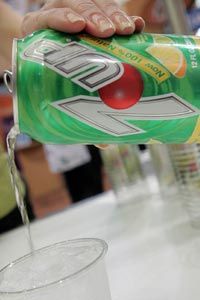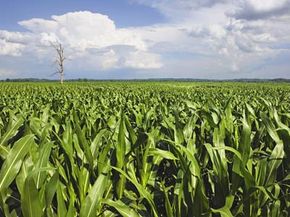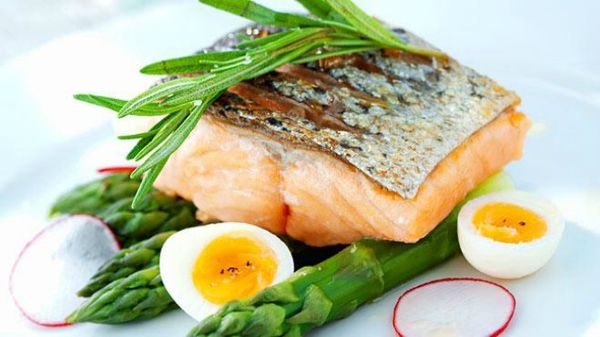If you want to cut down drastically the amount of processed food you eat, don't buy anything that has high-fructose corn syrup (HFCS) in it. Unfortunately, you'll have to have a strong liking for the taste of lettuce and notebook paper, because HFCS is in nearly everything: jelly, juice, sodas, whole-grain breads, cereals, ketchup, crackers, yogurt, sweet pickles, applesauce, salad dressing, ice cream, cough syrup and lots more.
So what is it? First, let's take a look at fructose. Fructose is a naturally occurring simple sugar that's produced by many plants. It's very sweet, and it's more soluble in water than glucose, another simple sugar that's also made readily available by nature and is the body's main source of energy. Fructose and glucose have the same type of atoms but are put together differently. When you combine fructose with glucose, you wind up with sucrose, which is your basic table sugar.
Advertisement
Corn syrup is a glucose-heavy syrup made from corn starch. There's no fructose in corn syrup -- not naturally, at least. In 1957, researchers discovered an enzyme that could turn the glucose in corn syrup into fructose. This process was modified and improved upon in the 1970s, making it possible to mass-produce HFCS. The entire process involves several steps and three different enzymes, but eventually a syrup with around 90 percent fructose content is created, and this is blended down with untreated syrup (containing only glucose) into a mix of either 42 percent or 55 percent fructose. The rest is glucose.
Knowing that it tastes delicious, should we go ahead and assume high-fructose corn syrup is also incredibly bad for us? Many people think it is, pointing to the rise in obesity and diabetes that seems to have mirrored the rise in consumption of HFCS. Critics point out that it's not a natural form of fructose and that the availability of cheap sweetener led to the supersizing of individual servings, such as 64-ounce sodas. Those on the other side point out that HFCS helps keep food prices low and is deemed "safe" by the Food and Drug Administration (FDA). Furthermore, table sugar is 50 percent fructose and 50 percent glucose, so there's only 10 percent more fructose in most HFCS.
So what's the truth? In this article, we'll find out just how bad for you -- if at all -- HFCS is.
Advertisement



